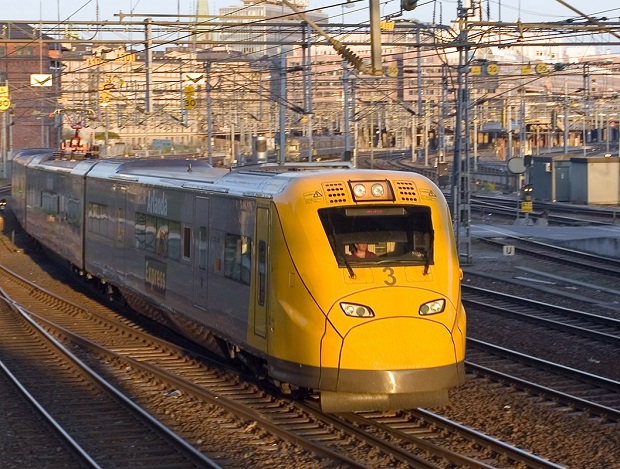In a sign of things to come, a Swedish train operator is using new technology that employs big data to predict the entire commuter train system two hours into the future.
The a new mathematic algorithm, called “The commuter prognosis” has been developed in Stockholm, Sweden.
It works like a seismograph. When a train is not on time the algorithm forecasts the risks of delay effects in the entire network by using historic data.
Mikael Lindskog communications director at Stockholmstag, the commuter train operator in Stockholm, said: “We have built a prediction model, using big data, that let’s us visualize the entire commuter train system two hours into the future. We can now forecast disruptions in our service and our traffic control center can prevent the ripple effects that actually cause most delays. This is the next generation forecasting tool for the commuter train industry.”
The effects of one delayed train can quickly multiply within the entire train network. Today the traffic control center analyzes the delays manually in order to to prevent future delays. By automating the forecasting we can raise our service level significantly.
Wilhelm Landerholm the mathematician who has developed the algorithm, gave an example of how the technology could work.
“The commuter prognosis” will be the first automated forecasting model of its kind. In a long time perspective it´s possible that it will change how traffic control centers all over the world work,” Lindskog added.
“ Imagine that “The commuter prognosis” forecasts that a train will be 10 minutes late to station C in two hours. To deal with this the traffic control center issues a new train from station A that will arrive on time at station C. As soon as the new train has been put in motion the algorithm re-calculates and gives the traffic control center a new forecast for the entire train network within minutes.”
Since “The forecasting prognosis” can see delays up to two hours in the future, train operators will be now be able to inform passengers of risks of delays before they delays actually happen.
Also, departure information will be more accurate so passengers can plan their trips better.
“The most important benefit of “The commuter prognosis” will be our ability to provide a more punctual public transportation. But I also know that our passengers value proactive information about delays. If a parent who takes the train to pick up kids at kindergarten receives information about delays two hours before they happen he or she can rearrange his time schedule to make it work,” Lindskog added.
“The commuter prognosis” will be available in a smart phone app for the commuters in Stockholm fall 2015. In the future the algorithm will be adaptable for more types of public transportations and cities.
THIS IS HOW IT WORKS:
· A mathematical model interprets big data to forecasts for each train in the train network.
· The commuter prognosis can warn about delays two hours before the departure or arrival actually takes place.
· Simultaneously “the commuter prognosis” calculates how the delay affects other trains in the system and gives information about it automatically.
· The purpose of “the commuter prognosis” is to make life easier for traffic control centers and to give passengers more information.
· Stockholmstag invented the algorithm that is used for “the commuter prognosis” together with the mathematician Wilhelm Landerholm. The algorithm can be adapted to be used for other sorts of public transportations in other cities in the future.


14 SEPTEMBER 2015 - WAR OF THE DRONES
[…] Train operator uses Big Data to ‘avoid delays that haven’t happened yet’ […]